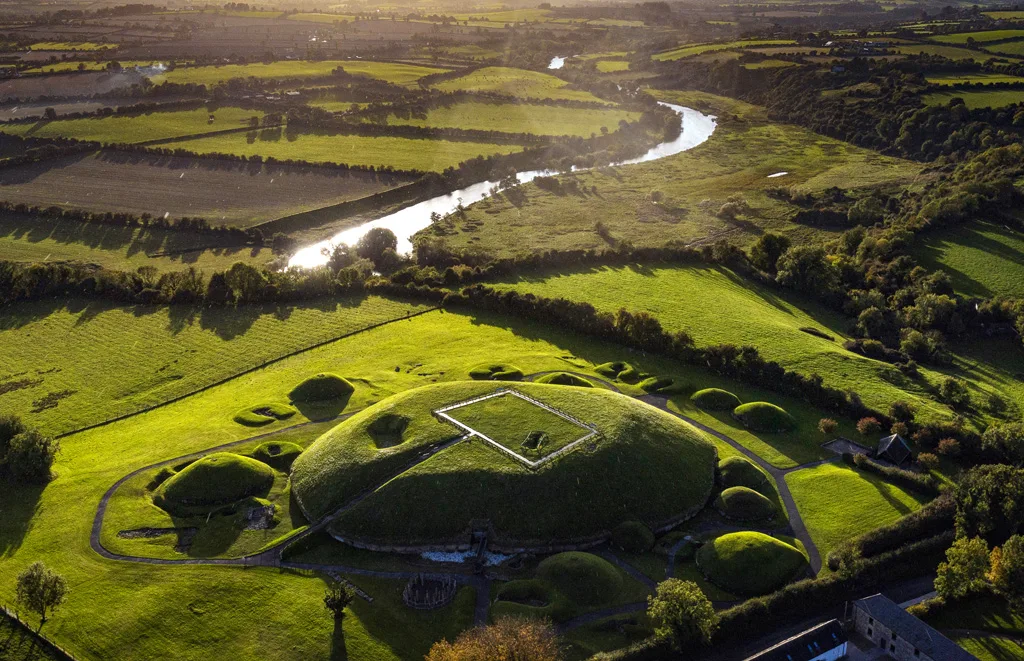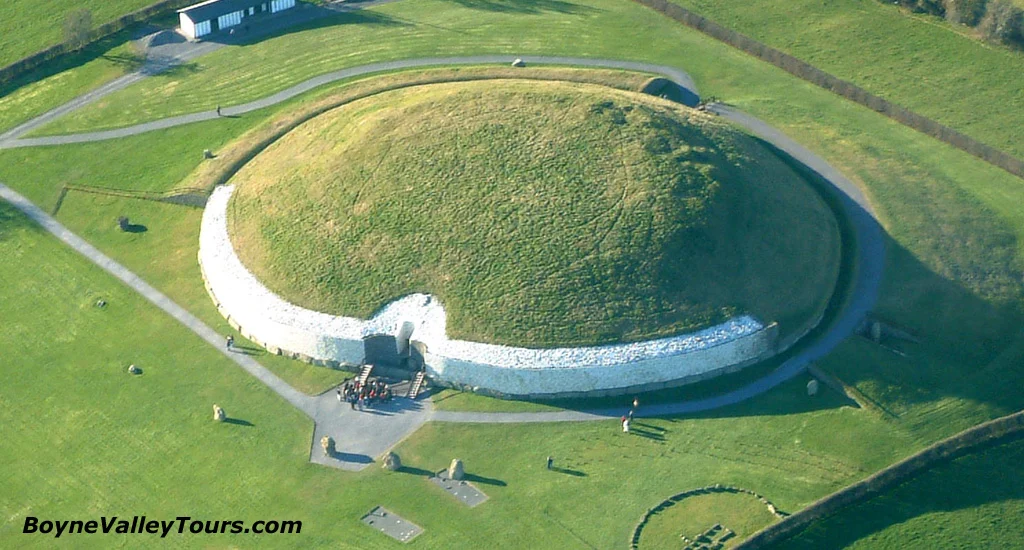 Book a tour
Book a tour
The River Boyne rises in Carbury Bog, County Kildare and flows northeast for 70 miles (112 kilometers) through County Meath, where it enters the Irish Sea between Mornington, County Meath and Baltray, County Louth. The Boyne Valley is recognized as an area rich in heritage and is considered the heart of Ireland’s Ancient East. The UNESCO World Heritage passage tombs at Newgrange, Knowth and Dowth are located on the banks of the Boyne between Slane and Drogheda.
The Boyne Source
The origin of the River Boyne is traditionally associated with Trinity Well in Carbury, Co. Kildare. However, the river actually rises in Carbury Bog, passing by Trinity Well, as depicted in the photography above. The water from Trinity Well may contribute to the flow of the emerging river, adding a romantic touch to the narrative by linking the river’s source to a sacred well rather than a bog.
Boyne Valley Heritage
The River Boyne has a rich historical, archaeological and mythical heritage. The Battle of the Boyne, a major battle in Irish history, took place along the Boyne near Drogheda in 1690 during the Williamite war in Ireland. The Boyne passes Trim Castle, the Hill of Tara (the ancient capital of the High King of Ireland), Navan, Ardmulchan, the Hill of Slane, the ancient temples at Newgrange, Knowth and Dowth, the 12th century Mellifont Abbey, and the medieval city of Drogheda. In the Boyne Valley can also be found other historical and archaeological monuments, like the passage tombs at Fourknocks, the cairns at Loughcrew, celtic crosses at Monasterboice and much more.
The River Boyne Mythical Origins
The River Boyne derives its name from the legendary Celtic goddess Bóann (or Bóand). The story goes that there was once a magical well – the Well of Wisdom (Tobar Segais in Irish) – which belonged to Nechtain, King of Leinster and husband to the goddess Bóann. Nechtain was very protective of his magical well and no one but he and his three cup bearers were permitted to visit it. One day Bóann decided to visit the well and see for herself its wonders. Some say she walked around the well three times counter sun-wise, others say she merely peered into its magical depths. Whatever the case, the waters of the well rose up – blinding, mutilating and drowning the goddess – and then rushed seawards turning into a river.
The Salmon of Knowledge
The Salmon of Knowledge The Salmon of Knowledge (in Irish, An Bradán Feasa is a creature from the Fenian Cycle of Irish Mythology. It features in the narrative The Boyhood Deeds of Fionn, which recounts the early adventures of the legendary Irish hero Fionn Mac Cumhaill. According to Irish mythology the first thing to ever come into creation was a hazel tree, and in its branches was contained all the knowledge of the universe. This hazel tree flourished over the Well of Wisdom (Tobar Segais) within which lived a great speckled salmon. The story goes that the salmon ate the hazel nuts which on occasion fell into the well, thus acquiring all the wisdom of the universe. It was foretold that the first person to catch and eat the salmon would gain this knowledge and that a man by the name of Fionn would be the one to do so. Nonetheless, many tried and failed, until a poet named Finnegas having spent seven years fishing the Boyne caught it. He is believed to have caught the salmon at Féc’s Pool (Linn Féic), known as the ‘Pool of the Boyne’, near Slane, Co. Meath.
Finnegas instructed his apprentice, a young boy named Deimne Maol, to prepare it for him. Deimne burned his thumb bursting a blister on the cooking salmon. Instinctively he put his thumb into his mouth to ease the pain and in an instant he acquired all its knowledge. When Deimne brought the cooked meal to Finnegas, his master saw something in the boy’s eyes that had not been there before. When asked by Finnegas, Deimne denied that he had eaten of the fish. When pressed, he admitted his accidental taste. What the old poet hadn’t known was that Deimne had another name, given to him by his mother – Fionn, meaning her fair-haired one. It was this incredible knowledge and wisdom gained from the Salmon of Knowledge that allowed Fionn Mac Cumhaill to become the leader of the Fianna, the famed heroes of Irish myth. He was killed at Áth Brea or ‘Ford of Brea’ on the Boyne.

The River Boyne and Dunmoe Castle viewed from Ardmulchan Church
The Boyne Navigation
The Boyne Navigation is a series of canals running roughly parallel to the main river from Oldbridge near Drogheda to Navan. Owned by An Taisce, the Inland Waterways Association of Ireland are restoring the navigation to navigable status. The canal at Oldbridge which runs through the Battle of the Boyne Site was the first to be restored.
Fishing
The River Boyne is renowned for its exceptional Brown Trout fishing, although it also experiences a notable run of Salmon and Sea Trout, particularly during the summer months.
Salmon
The prime Salmon fishing locations are situated in the lower part of the river, stretching between Drogheda and Navan. While Salmon can also be found in lesser numbers upstream of Navan, specifically at Bective and Trim.
The Salmon run typically commences in early March and continues until the end of May, with the primary fishing efforts concentrated around Navan and downstream towards Slane. In the past, the river used to witness a substantial run of large winter fish weighing between 20 and 30 pounds, but this has diminished in recent years, and most spring fish now average around 10 pounds. Notable spring fishing spots include The Ramparts and Sophie’s Island.
The Grilse (Salmon returning to fresh water after a single winter at sea) start their run in July and persist through the end of August. The best Grilse fishing areas are from Oldbridge upstream to Slane, with Oldbridge, Staleen, Crewbawn, Johnstons, and the Scabby Arch being prime locations. Additionally, the stretch from Slane to Navan also yields a decent number of Grilse each year.
The River Boyne experiences a noteworthy run of autumn fish in August and September, with some individuals reaching weights exceeding 20 pounds. In low water conditions, autumn fish can accumulate in the stretches below Slane, providing excellent angling opportunities as far as Navan during each flood.
Sea Trout
Sea Trout runs start in late April and extend through the end of September, with the peak season being June and July. The most favorable areas for Sea Trout fishing are around Oldbridge, although you may encounter them as far upstream as Navan. Particularly good fishing can be found below the Obelisk Bridge in Drogheda. The average weight of Sea Trout is approximately 1.5 pounds, but larger specimens weighing up to 5 pounds are occasionally caught. Fly fishing at night is the most productive method, although Boyne Sea Trout also feed on river insects during summer evenings, especially when there are heavy hatches of Blue Winged Olives and sedges.
Brown Trout
The River Boyne is an exceptional Brown Trout fishery, with an average trout size under 1 pound, although specimens weighing up to 6 or 7 pounds can be found. As a limestone river, it hosts various hatches, including olives, sedges, and the mayfly Ephemera danica. Prominent spots for Brown Trout fishing include the Navan area, Kilcairn, Blackcastle, Dunmoe, Stackallen, and downstream of Slane at the Scabby Arch, Crewbawn, Johnstons, Rossnaree, and Staleen.
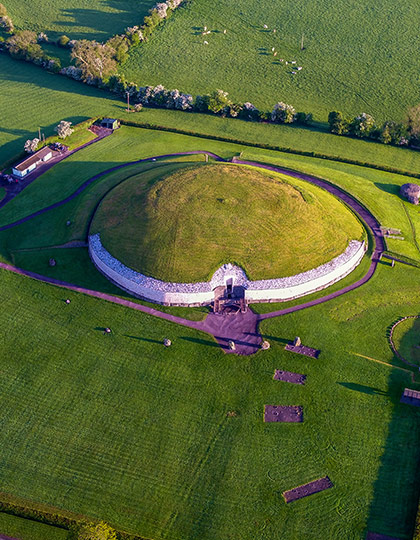
Newgrange & Boyne Valley

8hrs | €650 + Booking Fees

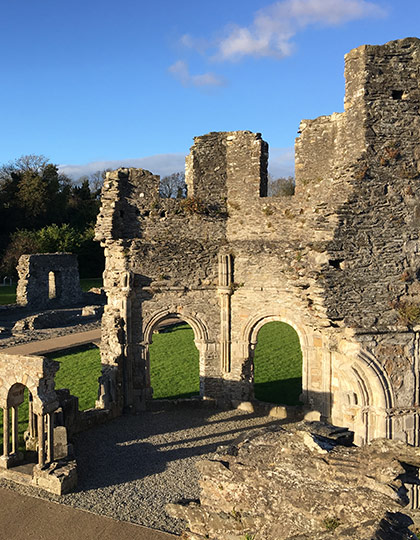
Boyne Valley Castles & Abbeys

8hrs | €650 + Booking Fees

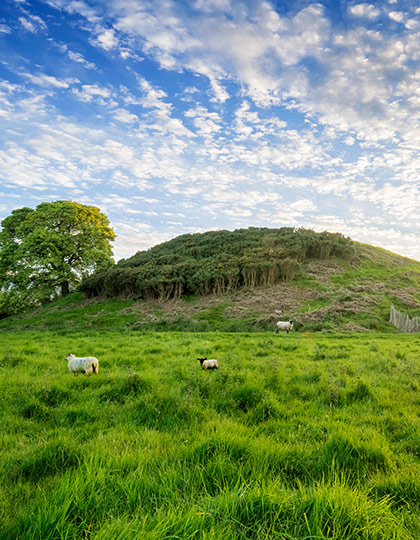
Meath Megalithic Sites

8hrs | €650 + Booking Fees


Glendalough & Scenic Wicklow

8hrs | €650 + Booking Fees

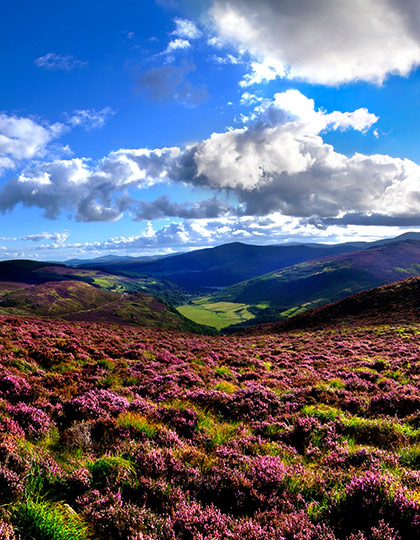
Wicklow Gardens & Scenery

8hrs | €650 + Booking Fees

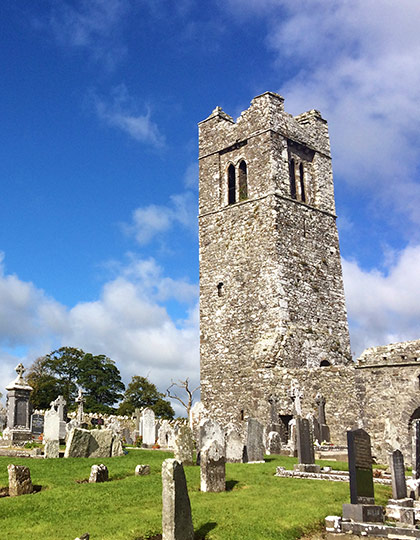
Cruise Excursions

8hrs | €650 + Booking Fees




